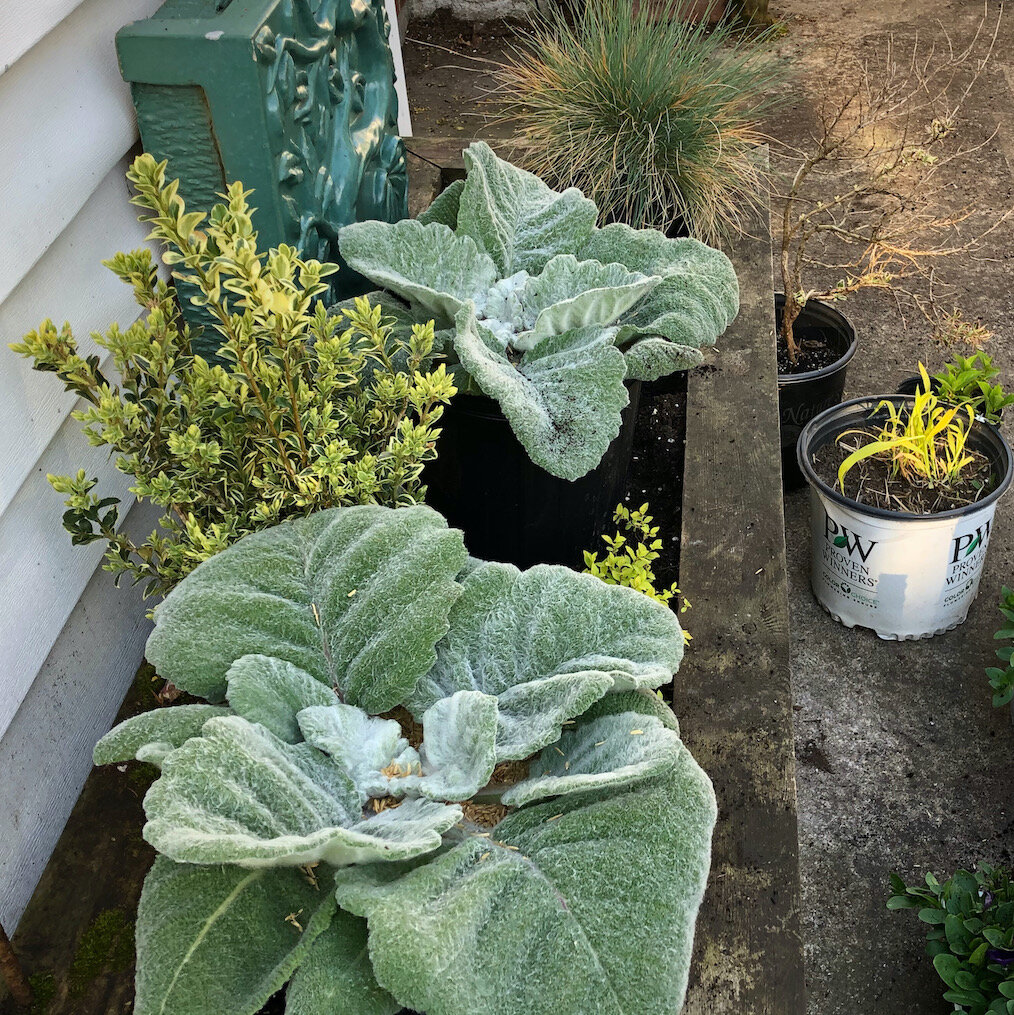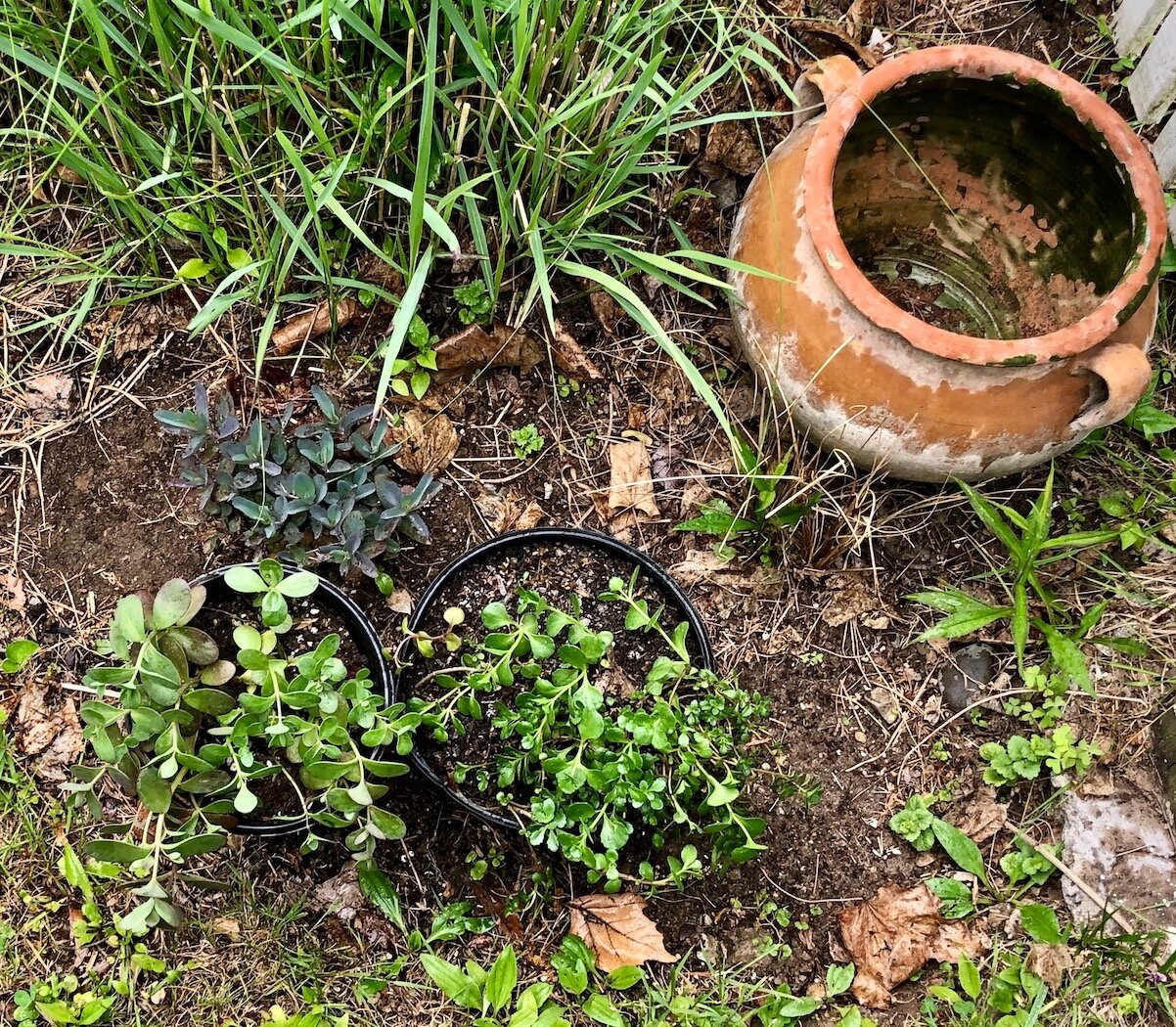Want To Create Awesome Containers? How To Find Homes For Orphan Plants
Guilt spurred me on to start my shopping at home this spring. Yes, I’m talking about the secret stash of plants hidden behind my vegetable garden. It currently consists of a bunch of shopping errors and struggling specimens I’m nursing back to health. I know I’m not alone - raise your hand if you accumulate plants you don’t have homes for. Maybe they came from a plant sale, a crazed shopping spree or someone else’s garden. Now you’re stuck with them.
As you can see, some of mine look better than others, but as I surveyed the motley assortment, an idea crept into my head - why not give them homes in some of my containers? So I began to experiment with them.
This cast of characters below dictated the blue, gray and gold color scheme of my first experiment.
Plants from left to right: Variegated Boxwood, Salix candida ‘Silver Fox’, Deutzia gracilis ‘Creme Fraiche,’ Festuca glauca ‘Elijah Blue’ (Blue Fescue) and Spirea japonica ‘Golden Elf.’
Here’s what I bought: another Blue Fescue, two Salvia Argentea and Sedum sieoldii ‘Medio Variegatum’. All of these are perennials that can be overwintered in the containers if I decide to leave them in place. Note - any perennial or shrub you overwinter must be hardy to a zone below your area ( I’m in zone 5-6, my plants should be zone 4 or below). I couldn’t resist adding that little gold Sedum Japonicum ‘Tokyo Sun’ (at the bottom of the photo). It’s an annual in my area, but I was entranced by the foliage.
Here’s another composition - a rescued boxwood, several leftover Lamium ‘White Nancy’ and a Hydrangea serrata ‘Tiny Tuff Stuff’ I grew from the roots of a bigger plant.
I threw in a few purple wave petunias to give the container a little color and added another blue fescue.
Here’s a new dwarf Hydrangea, ‘Bobo’ overwintered from last year. To liven up the container, I paired it up with more lamium - how did I accumulate so much of this stuff? Oh well, as you can see it comes in handy and it’s a good spiller.
I’m on a roll now. I just plucked out a few more - a variegated buddleia (whimsical buy from last summer), a bunch of sedums and a pink daisy I can’t identify.
I still buy more plants than I need, but finding homes for the orphans feels pretty good. Not only does it alleviate guilt over my former errors, it feeds the creative spirit - not to mention saving the pocketbook!










